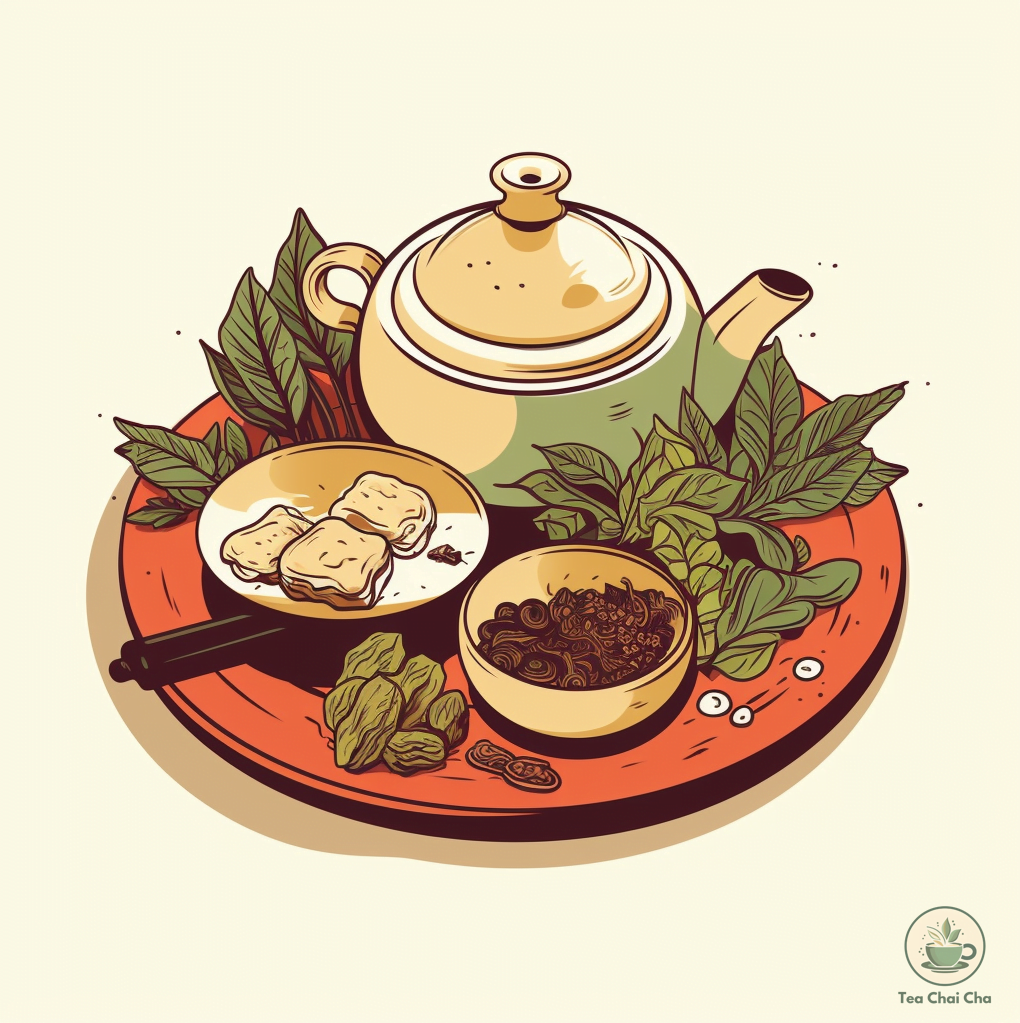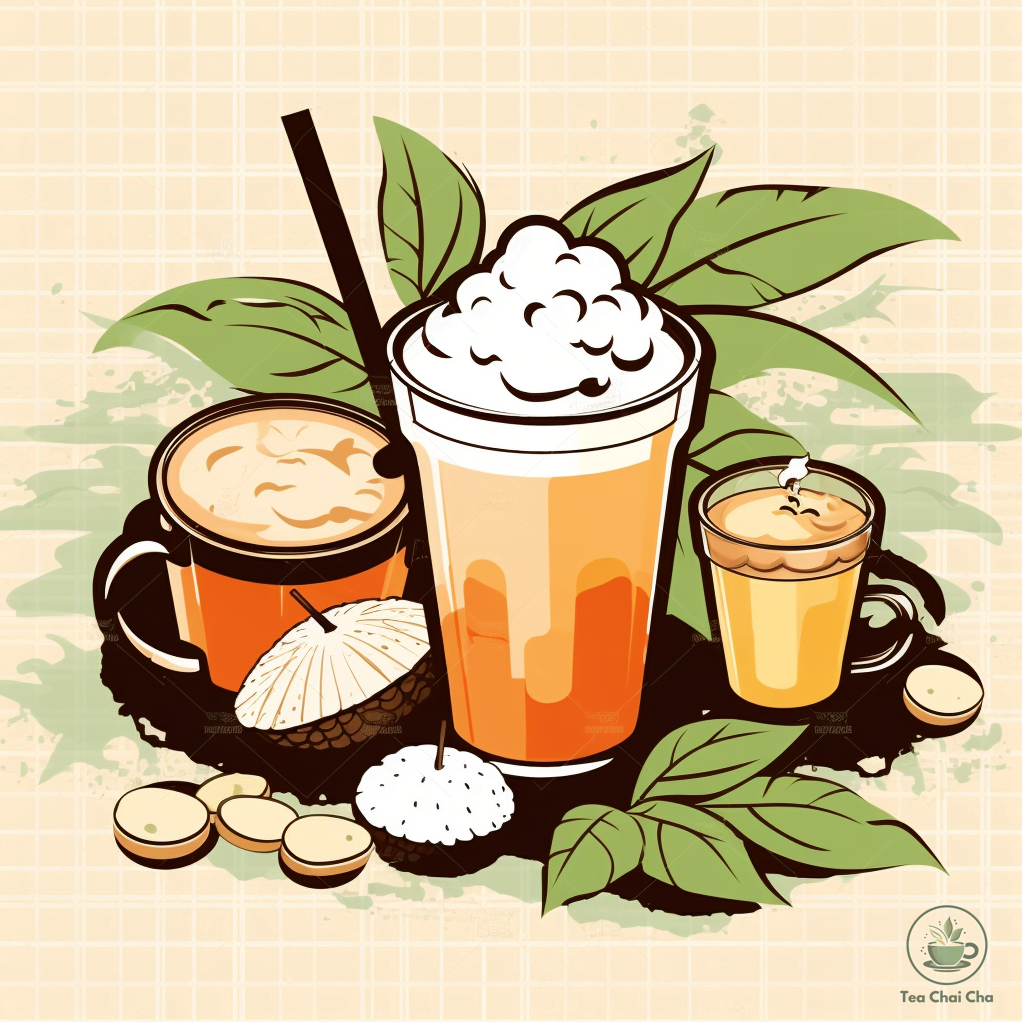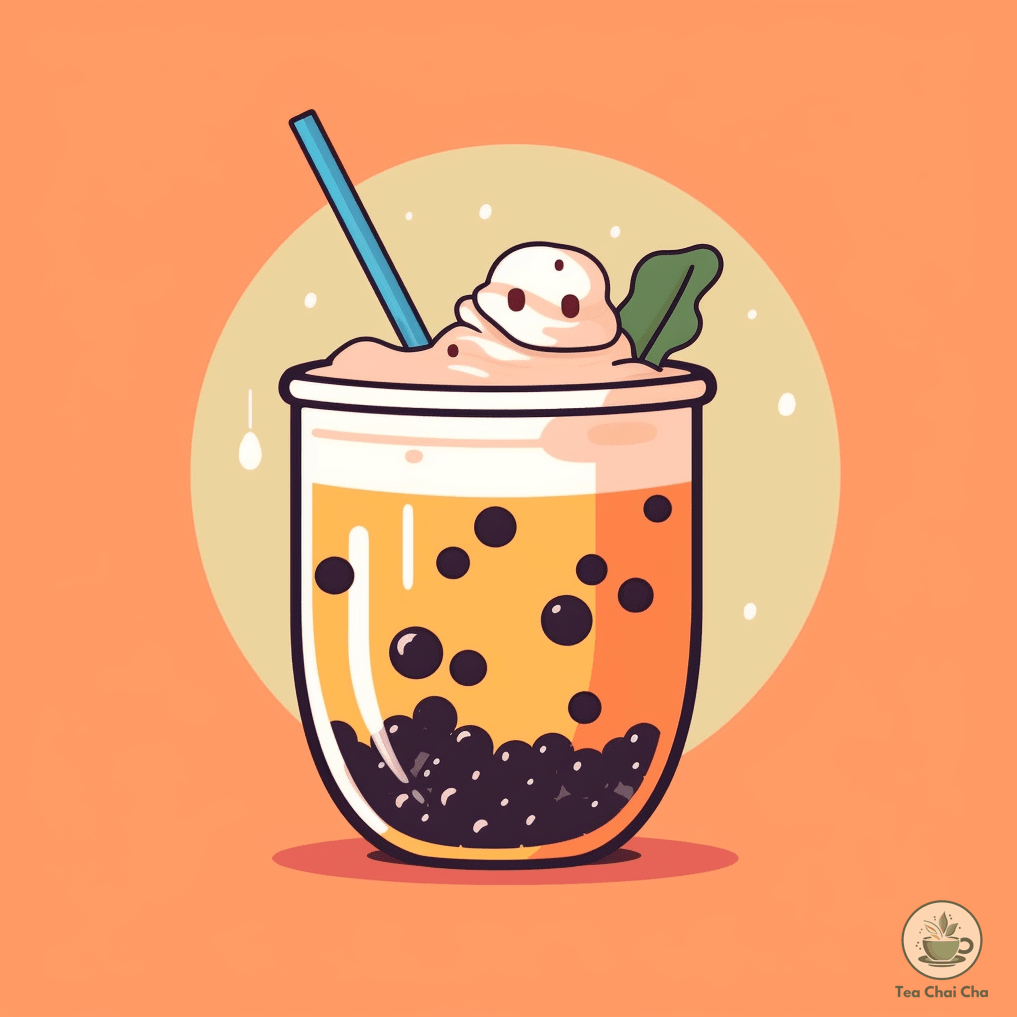Milk Oolong is a tea that comes all the way from Southeast Asia and trust me, it provides a truly unique and exotic tea drinking experience.
People absolutely adore it, and it has quite a fan following!
Now, what sets Milk Oolong tea apart from the rest is its smooth and creamy taste.
Yes, you heard that right – it’s creamy without any actual milk added to it.
But wait.. Didn’t you search for Oolong milk tea flavor? And I’m here talking about Milk Oolong?
Well, that’s not a mistake!
First thing first, what does oolong milk tea taste like?
Oolong milk tea tastes like a mix of mild, slightly floral oolong tea with the creamy sweetness of milk. It’s a balanced blend of tea and dairy flavors.
What Does Oolong Milk Tea Taste Like?
Oolong milk tea offers a unique and delightful flavor profile. It has a sweet, floral, roasty, and slightly nutty flavor.
Since various oolongs have distinct tastes, the overall flavor of oolong milk tea can vary depending on the specific oolong tea used.
However, compared to other teas like black teas, oolong tea as a whole tends to be milder.
Oolongs are famous for their sweet, fruity, and woody notes. These teas often have subtle roasty undertone with notes honey.
When transformed into oolong milk tea (also known as bubble tea), the flavor profile becomes even more enticing.
The combination of oolong tea with a creamy milk base results in a very sweet and creamy taste.
The milk base smoothens out the oolong tea’s flavor, creating a harmonious and indulgent beverage.
The mild infusion of the specific oolong tea used adds an additional layer of flavor that complements the creaminess of the milk.

Oolong Milk Tea vs. Milk Oolong Tea
Alright, let’s clear up the confusion between Oolong Milk Tea and Milk Oolong Tea, shall we?
Milk Oolong Tea is a pure and unadulterated tea made from a specific type of oolong tea called Jin Xuan oolong.
It’s a tea that stands on its own, showcasing the natural flavors of the oolong leaves.
On the other hand, Oolong Milk Tea, also known as Bubble Tea, is a whole different ball game.
It’s a fun and flavorful drink that contains oolong tea as one of its main ingredients, but it’s not just that.
To make Oolong milk tea, you’ll need a milk base, black tapioca pearls (those delightful bubbles!), ice, and, of course, oolong tea.
So, the key difference lies in the preparation. Milk Oolong Tea is pure and focused on the tea leaves’ taste.
However, Oolong Milk Tea combines oolong tea with milk and other delightful elements to create a delightful and refreshing bubble tea experience.
Next time you’re wondering which one to try, consider your mood.
Do you want a simple and authentic oolong tea experience, or are you in the mood for a fun and sweet treat with those chewy tapioca pearls?
Either way, both have their own charm and are worth a sip!

How Much Caffeine is in Oolong Milk Tea?
The caffeine levels in Oolong milk tea, also known as Oolong bubble tea, can vary depending on the tea shop’s preparation method and the amount of oolong tea used. On average, a six-ounce cup of Oolong milk tea may contain up to 40 mg of caffeine.
Similarly, milk oolong tea, which is an unadulterated oolong tea without the added milk and other ingredients, may also contain about the same amount of caffeine, reaching up to 40 mg per six-ounce serving.
Oolong Milk Tea Recipe
Recipe by Tania FaysalCourse: DrinksCuisine: Asian, Chinese, Taiwanese1
servings30
minutes20
minutes276
kcal50
minutesThis Oolong milk tea yields one serving. It is a tasty, creamy, and floral milk tea that you can easily customize.
Ingredients
1 cup milk
½ tablespoon granulated sugar
1 pinch salt
1 tablespoon oolong tea leaves
¼ cup raw boba
½ tablespoon honey
Ice
Directions
- Heat the Milk: In a microwave-safe container or on the stove, heat the milk until steaming. Microwaving or stovetop heating are both suitable methods.
- Sweeten the Milk: Stir in granulated sugar and a pinch of salt until fully dissolved into the milk.
- Add Oolong Tea: Place 1 tablespoon of oolong tea leaves into the milk. Allow the tea to steep in the milk for 30 minutes to infuse the flavors.
- Remove Tea Leaves: After steeping, remove the tea leaves from the milk. Press on the tea leaves gently to release any milk trapped within them, and then discard the tea leaves.
- Cool the Milk Tea: Allow the milk tea to cool down completely. This step ensures a refreshing and chilled final drink.
- Cook Boba: In a separate pot, bring water to a boil. Add ¼ cup of raw boba and cook according to the package instructions. The boba is done when it turns translucent and slightly glossy. Avoid overcooking to prevent it from becoming too hard.
- Sweeten Boba: Drain the cooked boba and mix in ½ tablespoon of honey while it's still hot. This adds a delightful sweetness to the boba pearls.
- Assemble the Drink: Take a serving glass and spoon in the prepared boba pearls. Add a few handfuls of ice for a refreshing touch.
- Pour Milk Tea: Gently pour the cooled oolong milk tea over the boba and ice.
- Enjoy: Give it a little stir, and your creamy Oolong Milk Tea with Boba is ready to enjoy!
Tips for Making Oolong Milk Tea Taste Better
Here’s how I usually make my oolong milk tea taste more heavenly.
-> A Dash of Salt
In my kitchen, salt isn’t limited to just savory dishes; it’s a crucial element even in drinks.
A pinch of salt has this magical ability to amplify the existing flavors, creating a symphony on the taste buds.
And here’s a little secret – when there’s a hint of salt, you might find yourself needing less sugar.
It is like a behind-the-scenes flavor enhancer that adds depth to the milk tea.
-> Store Oolong Milk Tea
Planning ahead? You can absolutely whip up a batch of Oolong milk tea and keep it in the fridge for a week.
Just a heads-up, though – hold off on adding any ice until you’re ready to enjoy it.
We don’t want any flavor dilution here!
Now, let’s talk boba. Fresh is best – leftover boba tends to lose its charm, turning a bit hard on the inside.
Ideally, savor your boba on the same day you cook it up; that’s when it’s at its prime.
If you find yourself with day-old boba, there’s a fix. Give it a spin in the microwave until it softens up.
Fair warning, though – it might be a bit of a wildcard. But but but, experimentation is part of the fun, right?
Variations and Adjustments
If you’re feeling experimental or just want to tailor this recipe to your preferences, here are some ideas that won’t turn your kitchen into a science lab:
-> Tea Swap
While this recipe enjoys the company of loose leaf tea, you’re welcome to introduce tea bags, especially if they’re the only tea buddies you’ve got on hand.
One or two tea bags should suffice, depending on your preference for tea strength.
-> Strength Tweaks
If you’re chasing a different strength for your tea, you’ve got a couple of levers to pull:
- Tea Quantity: For a bolder flavor, add more tea leaves or tea bags. Keep in mind that too much can result in bitterness, so a measured approach is recommended.
- Steeping Time: Adjust how long you let your tea steep. Be cautious though, as oversteeping can lead to bitterness. Experiment gently to find your sweet spot.
-> Caffeine
Oolong milk tea does come with a dose of caffeine. So, if you’re craving it late at night but also need your beauty sleep, you might want to rethink the timing.
But hey, if caffeine isn’t your thing, fear not! You have the option to craft this deliciousness with decaf tea, catering to your caffeine-sensitive moments.
-> Milk Choices
Milk is your canvas here, waiting to be transformed into creamy perfection.
I usually roll with soy milk, my go-to, but if you’re all about that whole milk life at coffee shops and boba spots, feel free to bring that to your cup too.
Oh, the oats are milking it too these days, but honestly, I’m not jumping on that oat milk hype train.
It’s not as creamy as it’s hyped to be in my book (plus, lactose is a non-issue for me).
But if dairy and nuts aren’t your thing, oat milk can swoop in as an excellent alternative.
Vegans, this is the moment to take note.
Milk is the one to watch if you’re on a dairy-free journey, so keep this in mind as you whip up your vegan-friendly version of this drink!
Sweeteners for Oolong Milk Tea
In the original recipe, granulated sugar takes center stage to sweeten the tea, while honey takes on the role for the boba.
But hey, feel free to take a detour from the norm.
My go-to is usually the warmth of brown sugar for the boba, creating a delectable melt-in-your-mouth experience.
Yet, during the recipe development and photo shoots, a bottle of exquisite, fragrant honey gifted by a family friend happened to make its way into the mix.
It was simply too irresistible not to incorporate.
Here’s a flavor excursion you could consider: a bold sweetener for the boba.
It’s a bit unadorned on its own, so let your imagination run wild.
Maple syrup, for instance, has been sparking my curiosity lately (do share if you give it a shot!).
Now, if you’re yearning for that distinctive brown sugar oolong milk tea, a little tweak does the trick.
Elevate the experience by using brown sugar in both the milk tea and the boba.
For a touch of depth, you can even give your brown sugar a caramelizing rendezvous (wait till it darkens and exudes that heavenly caramel scent) before inviting the boba to the party.
This little step pushes you closer to those famed brown sugar pearl milk teas you find at pricey boba places!

Oolong Milk Tea Flavor Variations
Traditional oolong milk tea is fantastic, but there’s no harm in spicing things up with a dash of creativity.
-> Cinnamon Oolong Milk Tea
You know, sometimes I find myself craving a little something extra in my oolong milk tea.
That’s when I discovered the magic of adding a pinch of cinnamon powder to the mix. It gives a chai latte vibe.
When you’re making your oolong milk tea, simply sprinkle in a pinch of cinnamon powder.
Just a tiny bit can make a world of a difference.
-> Rose Oolong Milk Tea
Since oolong tea already has a delicate floral undertone, why not take it a step further with the enchanting aroma of rosewater?
Just a touch can transform your milk tea into a fragrant masterpiece.
Start with a conservative ⅛ teaspoon per serving and then let your taste buds guide you as you adjust the amount to your preference.
A word of advice: Rosewater is a force to be reckoned with, boasting a potent presence.
Toppings To Make Oolong Milk Tea Taste Heavenly
You know, when it comes to topping off my oolong milk tea, I’ve got some tried-and-true favorites that never let me down.
But then there are those moments – like the ones I’m experiencing on this lazy Friday – where indulgence seems like the only sensible choice.
So, let me share my topping adventures with you:
-> Boba Bliss
I’ll start with the classic – boba pearls. They’re like little flavor bombs that elevate the milk tea experience.
-> Decadent Dreams
Feeling a bit fancy? How about a generous scoop of crème brûlée pudding? And why not go all out with a sprinkle of toffee bits for that extra touch of extravagance?
-> Creamy Delights
Craving even more creaminess? Add a luscious layer of cheese foam or a dollop of red bean whipped cream gracing the top of your milk tea.
-> Coffee Kick
If the day’s still got you in its clutches, those coffee-flavored jelly cubes might just be your saving grace. A little caffeine boost in a delightful chewy package.
-> Mochi Magic
Sometimes you’ve got to work with what’s in the pantry.
If boba is missing in action but mochi is on hand, why not whip up a batch of drinkable mochi? It’s the unexpected twist you didn’t know you needed.
Related Guides on Tea Taste
Frequently Asked Questions (FAQs)
Can I drink Oolong tea every day?
Yes, you can enjoy oolong tea every day in moderation. Oolong tea is generally safe to drink regularly. But make sure to not exceed one cup of Oolong tea a day.
Why is Oolong milk tea bad for you?
Oolong milk tea itself isn’t inherently bad for you, but certain factors could affect its healthiness.
If you add excessive amounts of sugar or sweeteners, the calorie and sugar content could become a concern.
Additionally, if you have lactose intolerance or dairy allergies, the milk component might not be suitable for you.
Is Oolong tea good for sleep?
Oolong tea contains caffeine, although usually less than black tea or coffee.
While caffeine can affect sleep, the impact varies from person to person.
If you’re sensitive to caffeine, it’s advisable to avoid consuming oolong tea close to bedtime.
However, there are caffeine-free herbal teas, like chamomile or valerian root tea, which are often recommended for promoting better sleep.
